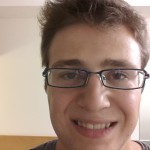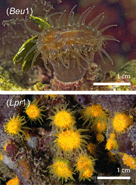Posted on behalf of Josh Campbell, web writer for CrystEngComm
Stony corals are the main reef builders of the planet and responsible for some of the oceans’ most beautiful architecture. However the processes behind their skeleton mineralisation are of some debate. Skeleton formation occurs at the interface of the coral tissue and the skeleton. This area is rich in proteins that are able to bind to water and has the properties of a highly viscous sol. Also observed at this interface is an amorphous organic membrane, which possibly acts as a colloidal gel matrix. Aragonite (a polymorph of CaCO3) precipitates out of seawater directly at this interface and is controlled by the organic gel matrix. Ionic concentrations are also believed to play a part, with high concentrations of Mg2+ favouring aragonite precipitation.
A recent article in CrystEngComm investigates how the organic matrix and the level of diffusion of Mg2+ affects the precipitation of CaCO3 . The authors of the article extracted two matrices from two different species of coral (differing in their reliance on photosynthetic algae) and placed them in a highly viscous agarose gel/sol. They then transported CaCO3 through using a counter diffusion system (CDS). Interestingly, they discovered that the different molecular compositions of the matrices resulted in different morphologies and crystallisation conditions which they suggest is due to the symbiotic relationship some corals have with photosynthetic algae (which provide the main energy source for calcification). We now know that the presence of Mg2+ has a large effect on the conditions needed for supersaturation in the medium as well as the phase selections of CaCO3 .
The use of CDS has allowed coral biomineralisation of these two coral species to be studied in vitro for the first time.
Read the article now for more information:
Exploring coral biomineralization in gelling environments by means of a counter diffusion system
M. Sancho-Tomás, S. Fermani, S. Goffredo, Z. Dubinsky, J. M. García-Ruiz, J. Gómez-Morales and G. Falini
CrystEngComm, 2014, DOI: 10.1039/C3CE41894D
 |
Josh Campbell is a PhD student, currently at the University of Southampton, UK studying crystal structure prediction of organic semiconductors. He received his BSc from the University of Bradford. |











